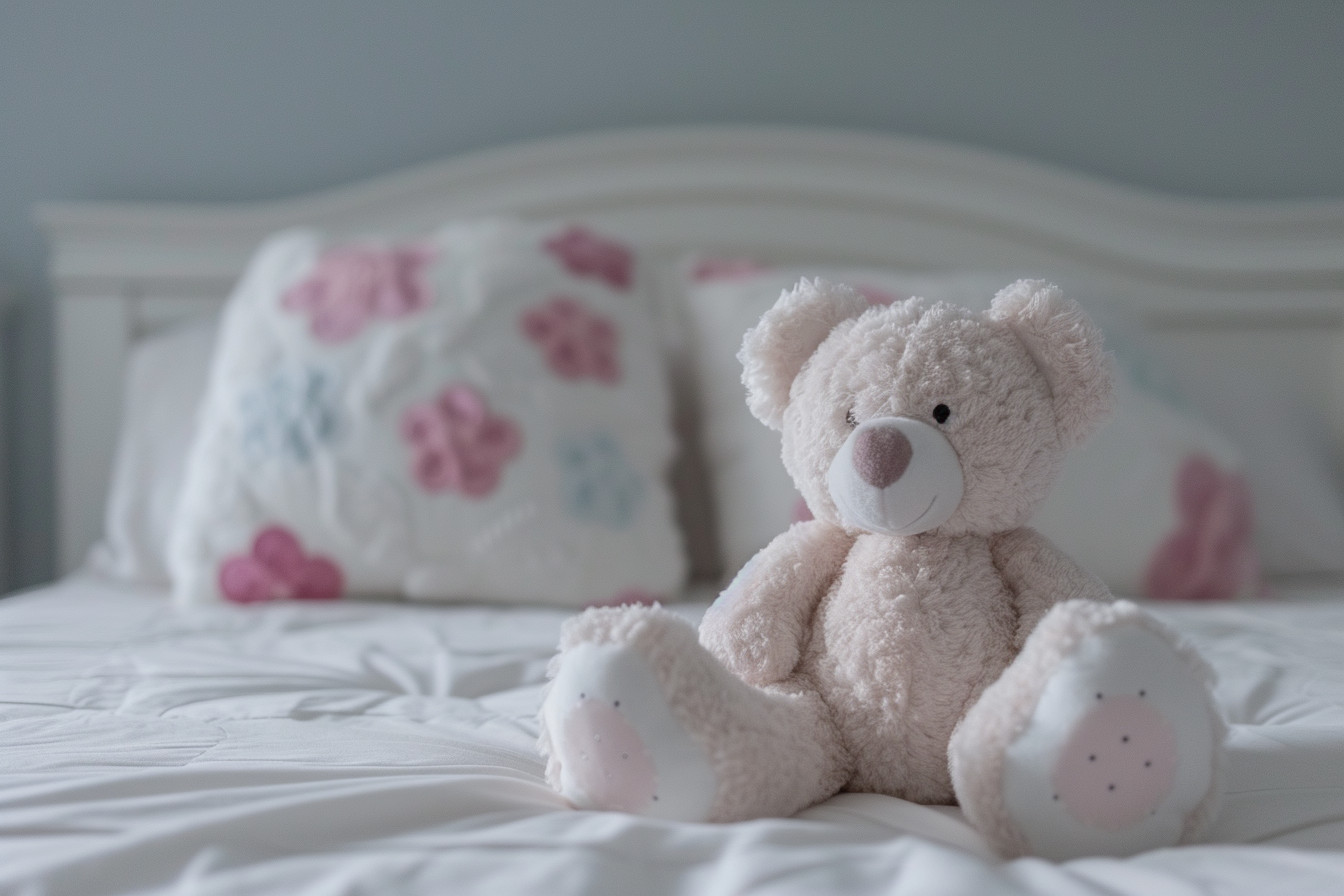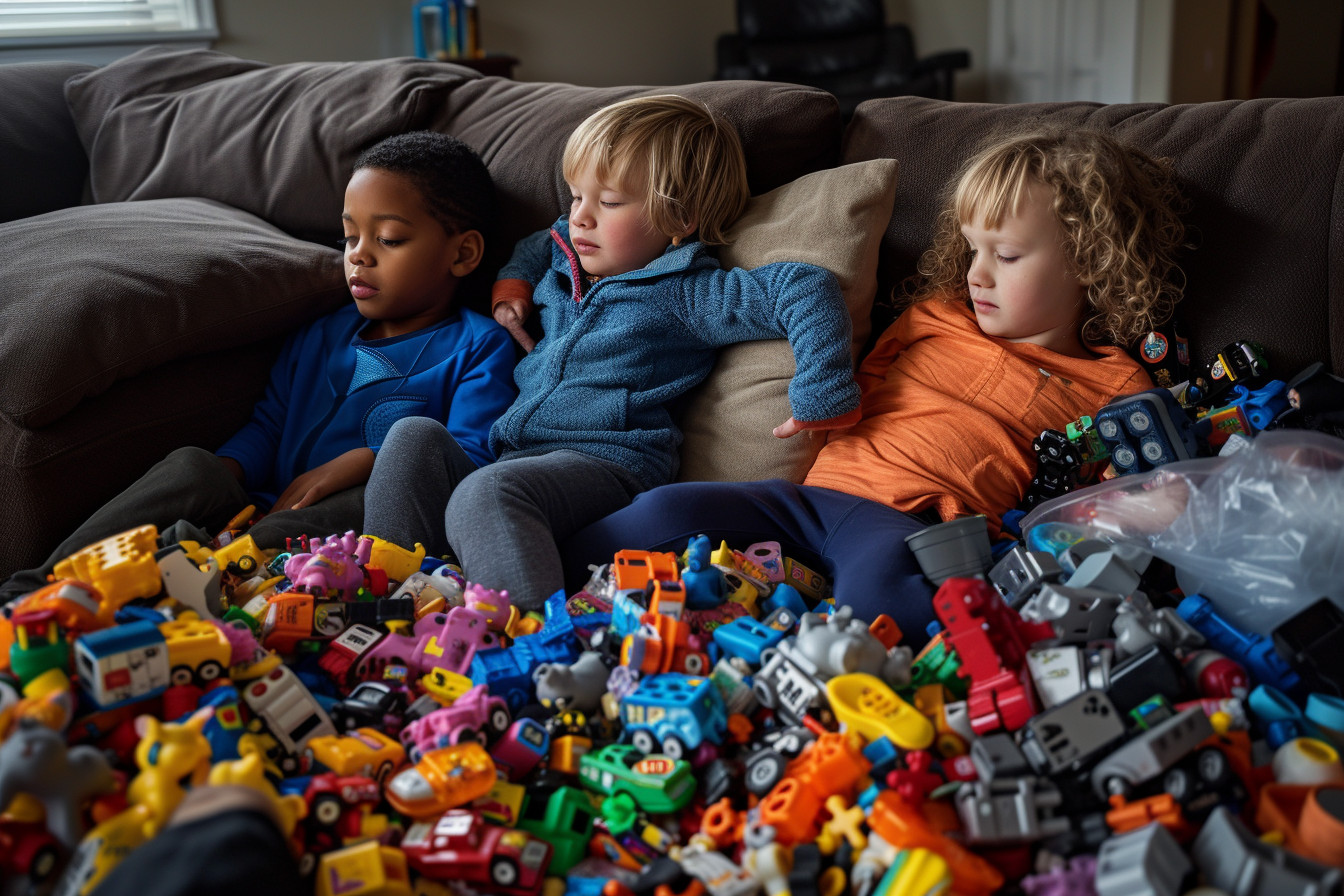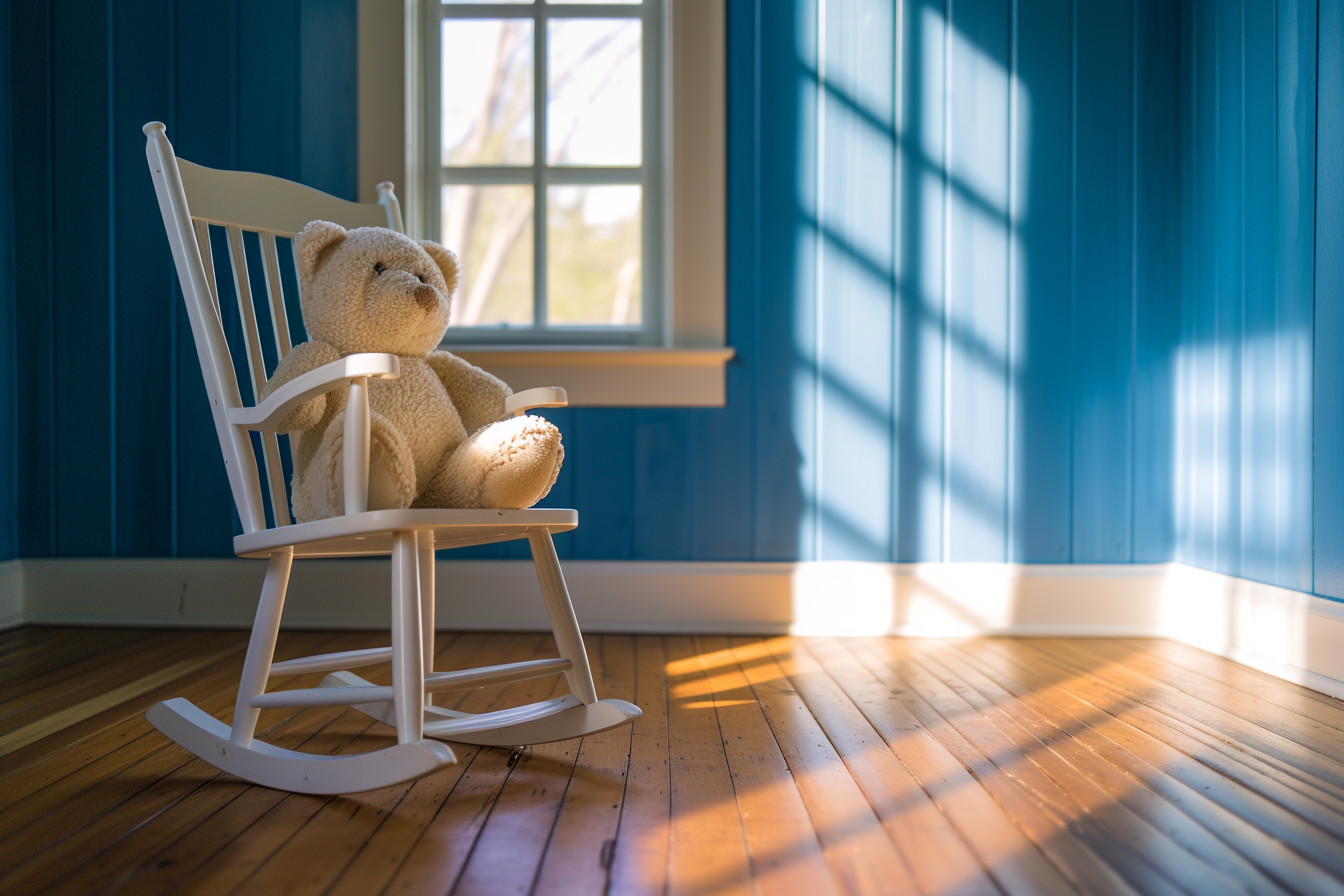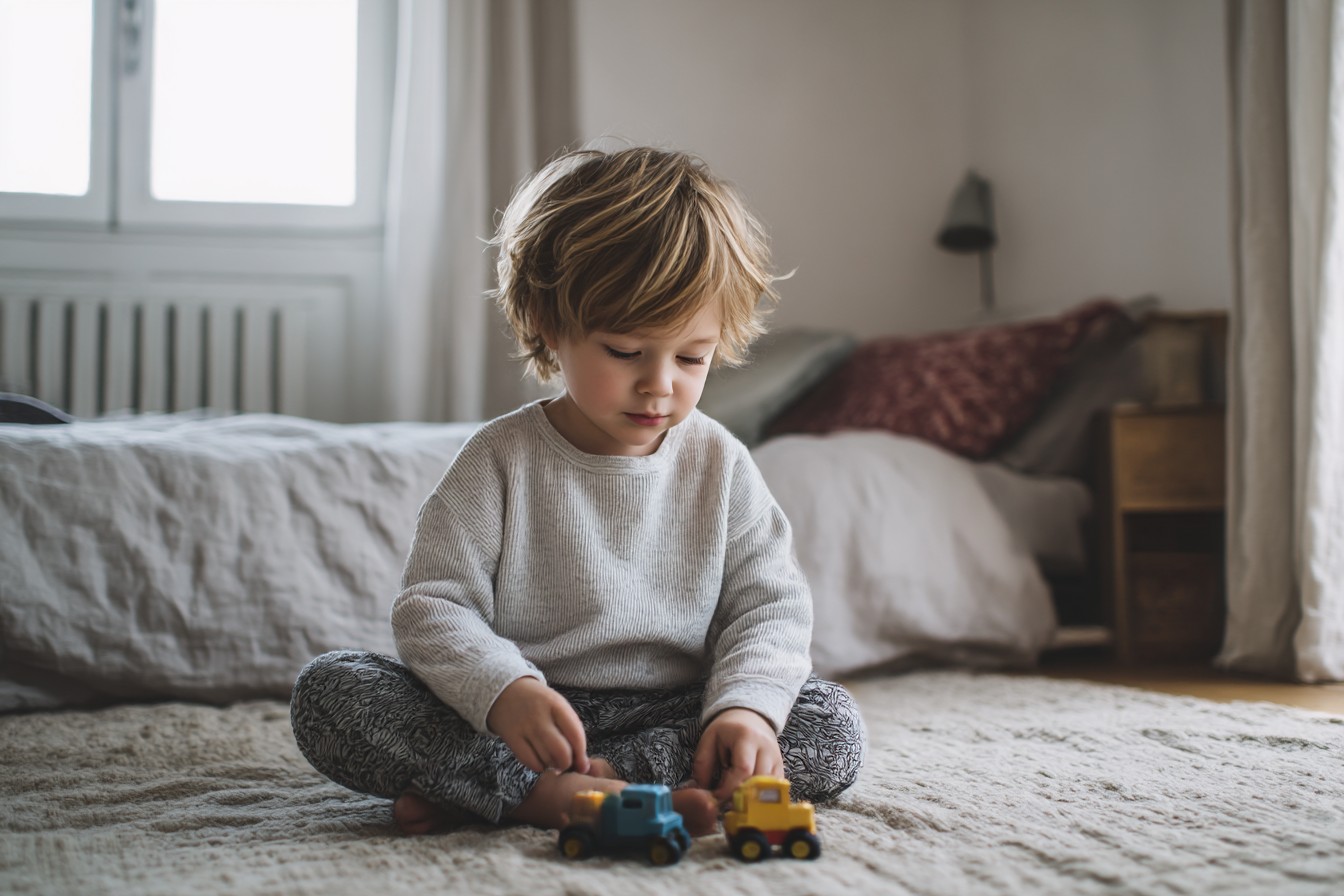I never planned on becoming a minimalist parent. Actually, I never planned on being a parent at all, but life has its own agenda sometimes, doesn’t it? When my daughter Mia arrived six years ago, so did an avalanche of stuff – gifts, hand-me-downs, and my own panicked purchases. You know that primal fear that grips new parents? The one that whispers, “If you don’t have this special bouncy chair/specialty teether/educational mobile, you’re already failing at parenthood”? Yeah, that one hit me hard.
Our modest two-bedroom flat transformed practically overnight. The living room disappeared beneath a sea of primary-coloured plastic. The spare room – once my reading nook – became a chaotic nursery stuffed with more baby paraphernalia than Mia could possibly use in her first year. I remember standing in the doorway one night, utterly overwhelmed, watching my husband James navigate a treacherous path between the cot, changing table, and three (yes, THREE) different baby swings we’d been gifted.
“This is madness,” he whispered, narrowly avoiding a stack of unread parenting books. I just nodded, too exhausted to speak.
The breaking point came when Mia was about eight months old. I’d spent twenty minutes hunting for her favourite teething toy, tearing apart the flat while she wailed in frustration. When I finally found it (under the fourth stuffed elephant she owned but never played with), I collapsed onto the floor beside her and had a proper cry myself.
That night, after she’d finally gone down, I sat with a glass of wine and really looked at our living space. It was stuffed with things we thought would make parenting easier, more enriching, more… well, perfect. But the reality? We were drowning in it all. The management of stuff had become a part-time job on top of actual parenting.
I started small – binning broken toys and donating duplicates. But as I researched child development (during those 3 AM feeds when you fall down internet rabbit holes), I stumbled across some fascinating research suggesting that fewer toys might actually benefit children. Studies showing kids engaged in more imaginative play and longer attention spans when presented with fewer options. Accounts from nursery teachers who observed children in sparse environments using more creativity than those surrounded by abundance.
It was like permission to breathe. Maybe I wasn’t depriving my child by cutting back – maybe I was actually helping her.
Our journey into minimalist parenting wasn’t overnight, and it certainly wasn’t perfect. There were well-meaning relatives who felt personally offended when I suggested “experience gifts” instead of toys for birthdays. There was my own guilt to contend with – was I robbing Mia of a “normal” childhood? And let’s be honest, there were days when I desperately wished for that battery-operated swing I’d donated when she was cluster feeding and wouldn’t settle.
But gradually, we found our rhythm. We established some principles that worked for our family:
Quality over quantity became our mantra. Instead of fifteen stuffed animals, Mia had three special ones that she genuinely bonded with. Rather than dozens of plastic toys that did everything for her, we invested in open-ended materials – blocks, art supplies, and versatile objects that could become anything in her imagination.
I’ll never forget watching her transform a simple wooden box into a dozen different things over the course of a week – a house for her dolls, a boat navigating treacherous carpet seas, a drum, a step stool to reach forbidden countertops (kids, eh?). The same box that I’d nearly passed up because it seemed “too basic” compared to the singing, flashing alternatives.
We embraced rotation rather than accumulation. The toys Mia did have lived in a closet, divided into collections that we’d swap out every few weeks. Suddenly, old toys became new again. Her attention deepened. And my sanity returned as our living space remained manageable.
This approach taught me something unexpected about children – they don’t actually need constant novelty. Often, what they crave is the chance to fully explore something before moving on. Adult interference – our well-meaning attempts to provide endless stimulation – can actually interrupt the natural development of concentration and imagination.

The hardest part? Managing other people’s expectations and generosity. My mother-in-law, bless her, shows love through gifts. Her initial reaction to our “experiences over things” request was somewhere between confusion and mild offense. “Children need presents to open,” she insisted, after showing up with three shopping bags on Mia’s third birthday.
Rather than battling family (because who has the energy?), we compromised. Grandparents could give whatever they liked – but those gifts stayed at their houses for visits. This solution worked brilliantly. Mia looked forward to the special toys that only existed at Grandma’s, and our flat remained manageable. Plus, my mother-in-law got the joy of seeing Mia play with her gifts every single visit, rather than them disappearing into the toy abyss at our home.
For birthdays and holidays, we introduced the “something you want, something you need, something to wear, something to read” approach. Four thoughtful gifts felt abundant to Mia but didn’t overwhelm our space. We also started a tradition of “experience days” – special outings chosen by Mia instead of physical presents. At four, she picked a day at the local farm. Last year, it was a pottery painting workshop. The anticipation and memories from these days far outlasted the excitement of most toys.
What surprised me most wasn’t how well Mia adapted – children are remarkably resilient – but how it transformed my parenting. With fewer possessions to manage, clean, find, fix, and rotate, I had more mental space. Actual physical space to sit on the floor and build with her. Time previously spent organizing stuff was redirected to experiences – baking questionable-looking biscuits, taking impromptu nature walks, or just lounging in pyjamas reading another chapter of whatever story had captured her imagination that week.
I’m not suggesting it’s all been perfect. There have been moments of doubt – like when Mia came home talking about some must-have toy that “everyone” at nursery apparently owned. Or when I briefly lost my mind during a sale and bought an excessive number of “educational” games that sat untouched for months before being donated.
And let’s be clear – our version of minimalist parenting wouldn’t win any extreme minimalism awards. We still have toys. We still have art supplies that occasionally explode across every surface of our home. We still have the odd plastic monstrosity that makes horrific noises but brings inexplicable joy to our child. This isn’t about deprivation or aesthetic purity – it’s about intentionality.
The benefits have extended beyond our physical space. Mia, now six, has developed what her teachers call “unusual persistence” – the ability to stick with challenges rather than flitting between activities. She’s creative in her problem-solving, turning household objects into props for elaborate games. And while I’d love to take credit for these traits, I honestly believe they’ve flourished partly because she’s had the space – literal and figurative – to develop them.
There’s research backing this up, too. Studies suggest that children with fewer toys engage in more imaginative play and develop longer attention spans. They learn to be resourceful and to find satisfaction in simpler pleasures. In a world where many adults are overwhelmed by choice and consumption, these seem like valuable skills to nurture.
Perhaps the most meaningful outcome has been our family’s shift toward valuing experiences over possessions. Our home is now a base for adventures rather than the primary source of entertainment. Weekends that once involved shopping “for just one thing” (ha!) now revolve around visiting parks, museums, or friends. Rainy days aren’t solved by new purchases but by building blanket forts or baking experiments.
I’m not suggesting this approach works for everyone. Families have different circumstances, children have different needs, and parenting is hard enough without adding extra pressure to do it “the right way.” Some children genuinely thrive with more sensory input and variety. Some family situations don’t allow for the time and mental space this approach requires initially.
What I am suggesting is that the default setting of modern childhood – more is better – deserves questioning. That gift-giving can be thoughtful rather than abundant. That children’s capacity for imagination often exceeds our expectations when we step back and give it room to flourish.
Six years into this parenting lark, I’m still figuring it out daily. There are still moments when I stand in toy shop aisles, tempted by something shiny that promises to be educational/engaging/life-changing. There are still relatives who think I’m a bit weird for requesting “no gifts” at parties. There are still days when I question every parenting choice I’ve ever made (isn’t that the universal parenting experience?).
But then there are the magical moments – watching Mia spent an hour carefully constructing a city from blocks, completely absorbed in her creation. Hearing her describe an outing we took months ago in vivid detail. Seeing her contentment in simple pleasures – a puddle to splash in, a tree to climb, a story to lose herself in.
In those moments, I know that in giving her less, we’ve somehow given her more.







